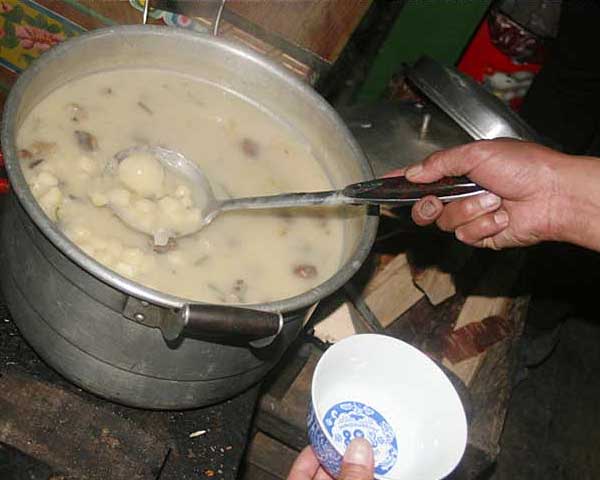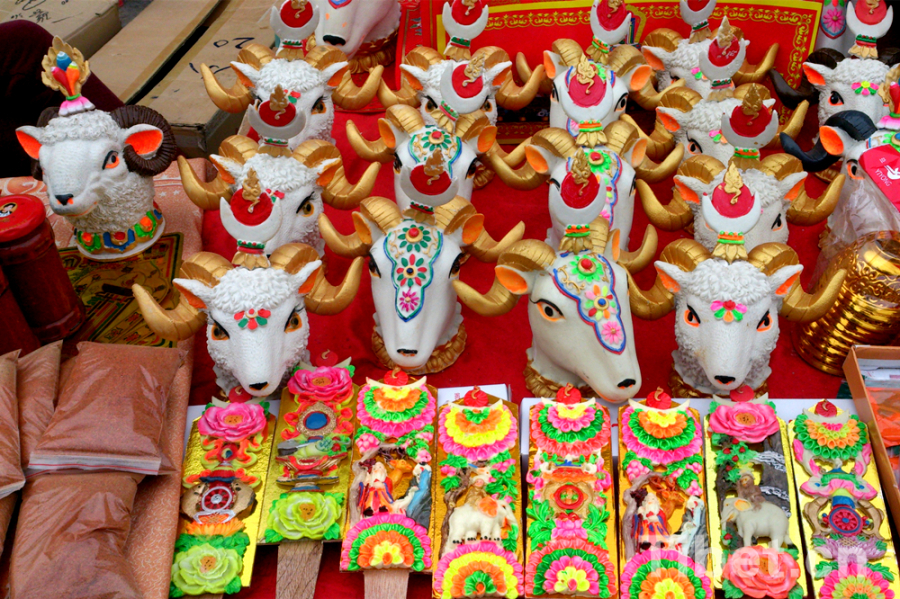The Tibetan New Year, or Losar, is the most ceremonious traditional festival in Tibet, which usually falls on the first day of the first month of Tibetan calendar in most areas of Tibet. It falls on Feb. 19, 2015 in most part of the Tibetan-inhabited areas, while some other areas celebrate it earlier.
On the Dec. 29 of Tibetan calendar every year, a series of celebrations will begin, including a family reunion, eating "Gutu" (a kind of dough drops), snatching auspicious water and burning aromatic plants, as well as New Year visits. Sports such as horse race and tug-of-war will also join in the cerebrations, which will not end until the 15th day of the first month.
Some unique folk customs of Tibetan New Year are as follows:
1. New year "Guqia"
It is a traditional Tibetan auspicious motif drawn on the ground by using Zanba (roasted highland barley flour), showing the well-known eight auspicious symbols of Buddhism, including Precious Parasol, Goldfish, Treasure Vase, Lotus, Dharma Wheel, Knot of Eternity, Victory Banner and White Conch.

File photo shows "Gutu" , a kind of dough drops which should be eaten on the Dec.29 of Tibetan calendar. [Photo/Baidu]
2. Butter sculpture in shape of sheep head
Called "Longo" in Tibetan, it is a multi-colored sheep head sculpture made of butter since sheep symbolizes auspiciousness, which is always placed in the middle of all the tributes in front of the niche for a statue of the Buddha, in order to pray for good harvest in the coming year; thus it is one of the necessities for Tibetan New Year.
3. A dinner on which dogs are invited
As the New Year comes, domestic dogs will also share the festive atmosphere with their owners, since every family will put holiday feast in plates or on a long plank and invite dogs to enjoy a same banquet as people.

File photo shows sheep head sculptures made of butter, which symbolize auspiciousness in the coming year thus is a necessities for Tibetan New Year (also known as Losar). [Photo/ China Tibet Online]
